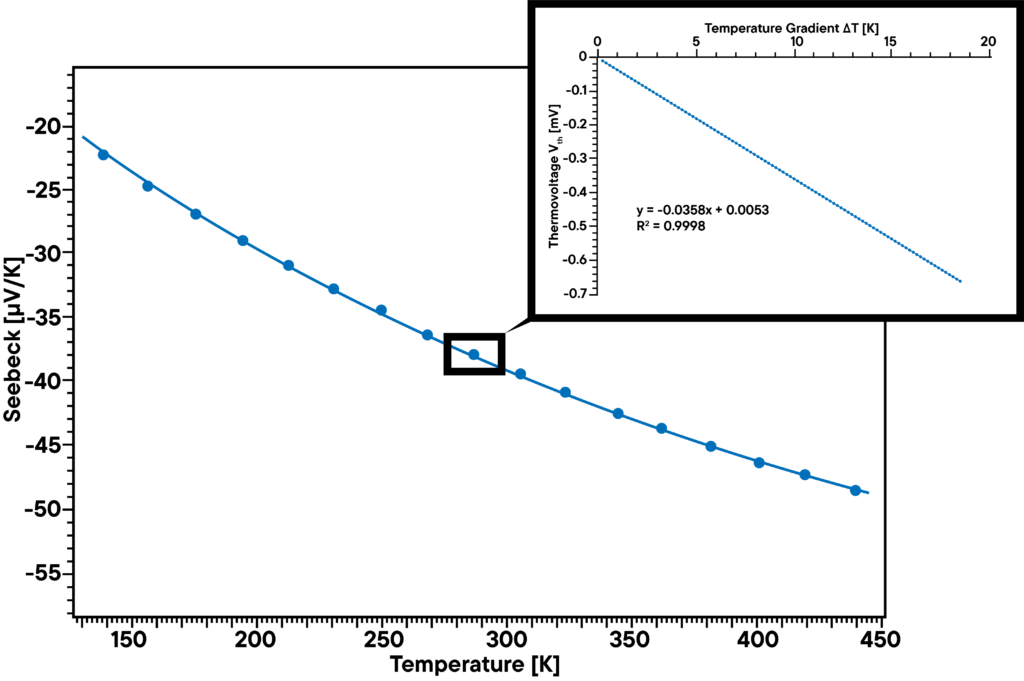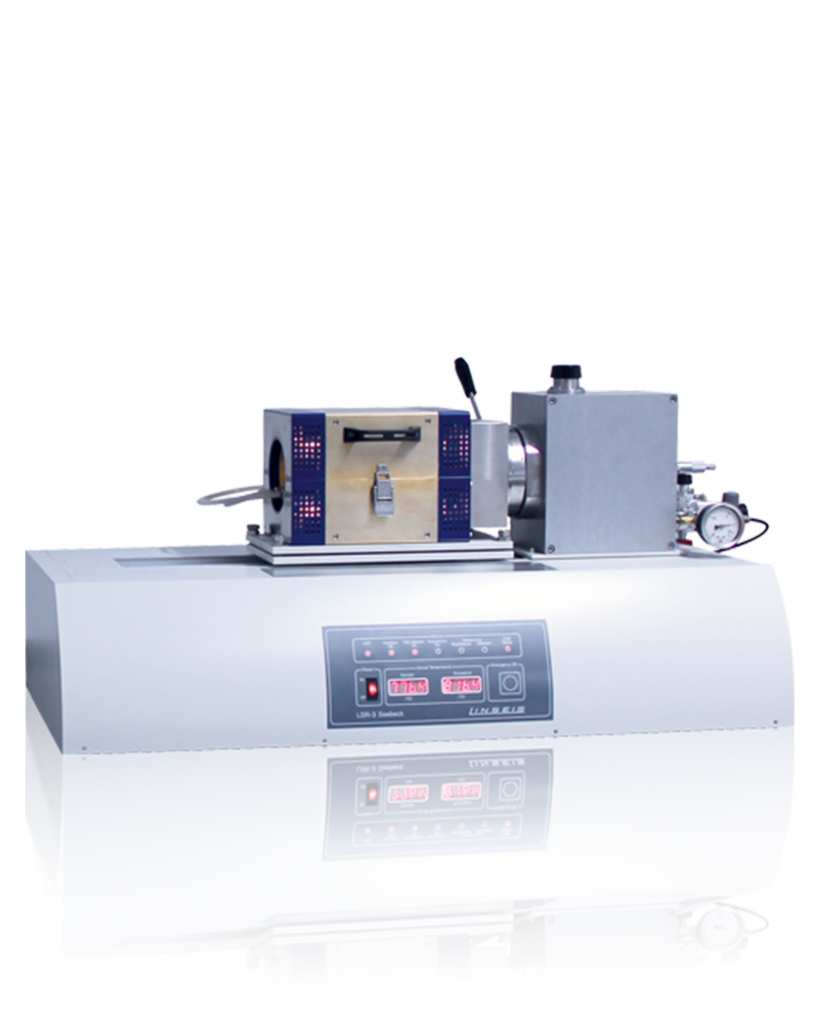Bismuth telluride is the only NIST-certified reference material for the Seebeck coefficient. But it can be used only up to a maximum temperature of 120°C. Constantan can be used up to 800°C and therefore be used as a high temperature calibration material. The slope technique, using different temperature gradients at every individual temperature, and calculating the Seebeck coefficient from the slope gives improved accuracy.

Seebeck coefficient measurement on a Constantan reference sample from -143°C up to +172 °C (130 K to 445 K). The Seebeck coefficient is measured using the slope technique (see inset) for each temperature measurement point. At every temperature, multiple temperature gradients were applied to the sample and from the slope of the resulting straight line the Seebeck coefficient was calculated. The result can be plotted as relative Seebeck coefficient against Pt or as absolute Seebeck coefficient.

